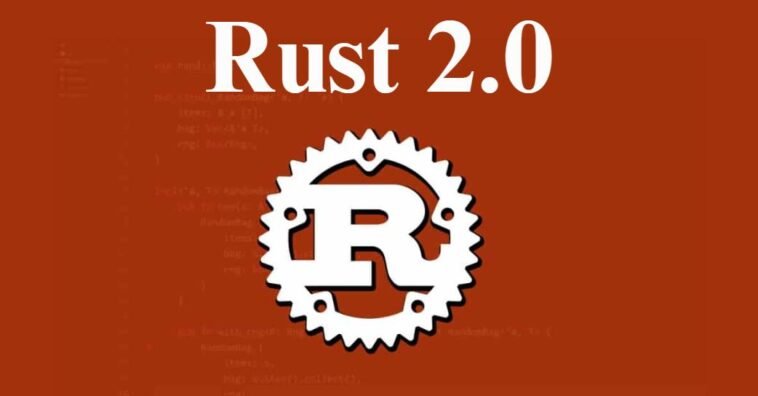Rust has been the most popular language on Stack Overflow. Read this article in its entirety if you are unaware of Rust. You may learn about Rust’s, why to use Rust, Rust 2.0, and much more in this post. So, let’s get started.
What Is Rust?

Rust is a programming language that claims to be quicker, safer, reliable, and simpler to learn. It is a system programming language that was created in 2006 by “Graydon Hoare,” a Mozilla employee. Rust’s syntax resembles that of the C++ programming language. By using this language, programmers can build secure and reliable applications. Enhancing safety, speed, and concurrency—the potential to carry out several computations concurrently—are the key goals of using Rust.
Good Read: Map VS HashMap In Java: The Major Key Differences Explained
What Are The Features Of Rust?
- Without a garbage collector (automated memory management feature), safety and improved memory management.
- Zero-cost abstraction which is a feature that enables programmers to hide internal code details).
- Developers may integrate the features of the C and Rust programming languages via “efficient C bindings”.
- A unique manual memory management feature that gives control over memory allocation and deallocation.
- a type interference feature that, while coding, automatically determines what an expression is.
- When it comes to compiling and executing programmes, Rust is incredibly quick.
What Kinds of Applications Can Be Built Using Rust?

Rust can be used in a variety of applications.
Operating systems have been developed using the Rust programming language because of its low-level control, effectiveness, and memory safety. It makes it simpler to create secure operating systems by ensuring safe memory access and preventing ambiguous behavior. Because of its low-level control, performance, and memory safety, Rust is a good choice for device driver development, especially in embedded systems. Writing secure and effective device drivers that integrate perfectly with the underlying hardware is made simpler by Rust’s type system and borrow checker.
Rust is frequently picked for web applications because it provides effective memory management. It makes it possible for developers to create memory-safe, high-performance applications.
Rust’s async/await pattern and parallelism support make it easier to create secure and effective parallel programs. It is also used for web development. Rust’s efficiency, scalability, and safety are its most crucial features; its async/await support makes it simple to develop high-performance backend services through concurrency.
Why To Use Rust?

- Excellent performance while maintaining memory security.
- It supports concurrent programming.
- the expanding number of Rust packages at crates.io repository.
- The language’s development is being driven by a vibrant community.
- Stability and backwards compatibility are ensured.
- Rust makes it simple to scale and support concurrency, making it ideal for creating solid applications that can handle the rising technological needs of the modern world.
- The older Rust codes work with the more recent versions of the language.
Rust 2.0-
Rust 1.52.0 has been made available. Anyone can create trustworthy and potent applications thanks to it. Instead of the language or standard libraries, an improvement to Clippy tools support is the most noticeable change in this update. Cargo’s build caching did not discriminate between the two, so running cargo check then cargo Clippy did not actually run Clippy. Since this has been fixed in version 1.52, users can now perform the two commands in any order and still get the desired results.
Stabilized APIs Are-
Stabilized methods included the following:
- Arguments::as_str
- char::MAX
- char::REPLACEMENT_CHARACTER
- char::UNICODE_VERSION
- Char::decode_utf16
- Char::from_digit
- Char::from_u32_unchecked
- Char::from_u32
- Slice::partition_point
- Str::rsplit_once
- str::split_once



GIPHY App Key not set. Please check settings